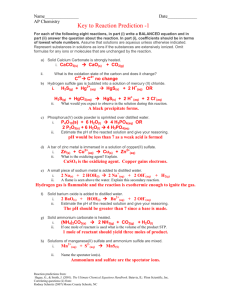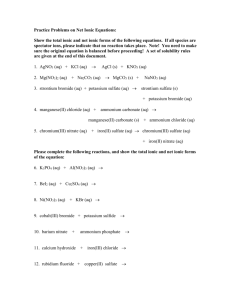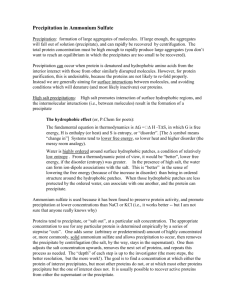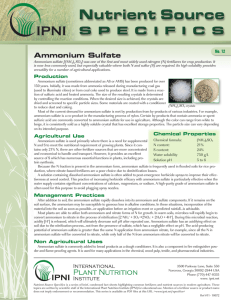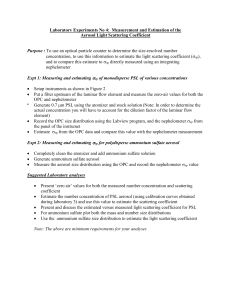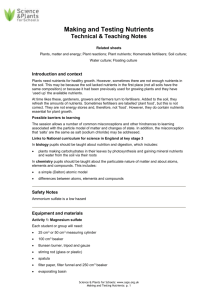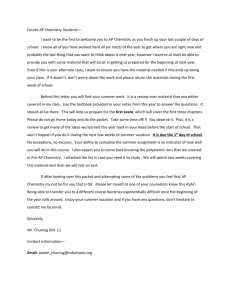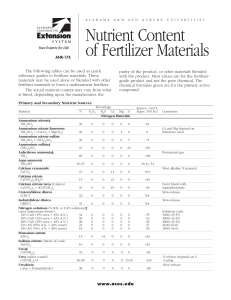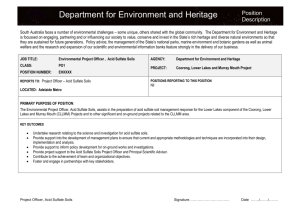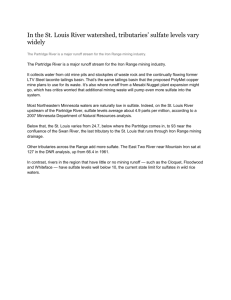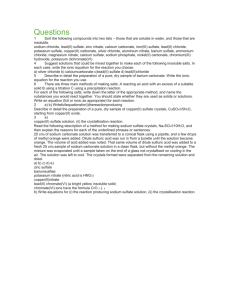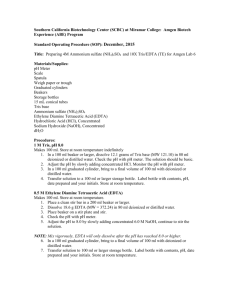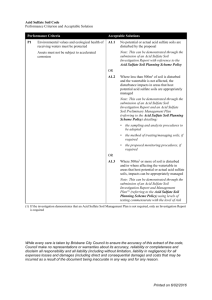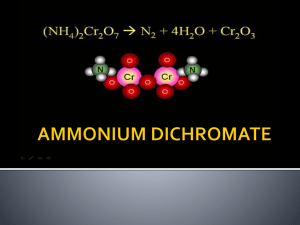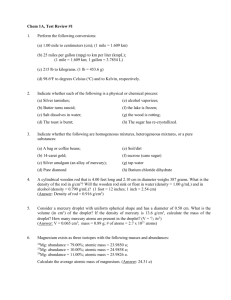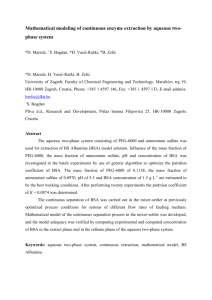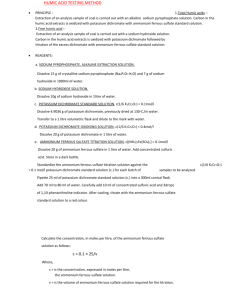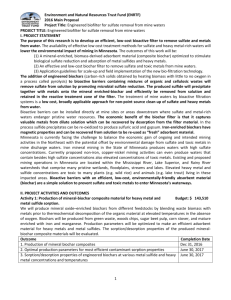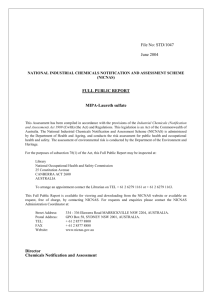Experiment 3 protein precipitation
advertisement
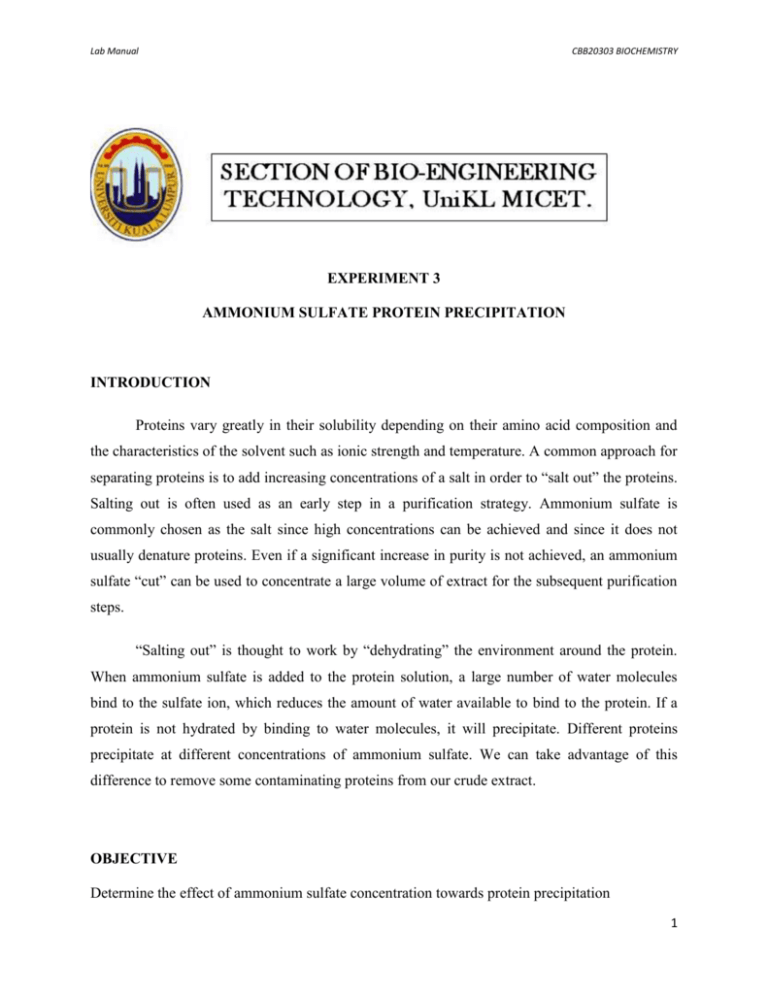
Lab Manual CBB20303 BIOCHEMISTRY EXPERIMENT 3 AMMONIUM SULFATE PROTEIN PRECIPITATION INTRODUCTION Proteins vary greatly in their solubility depending on their amino acid composition and the characteristics of the solvent such as ionic strength and temperature. A common approach for separating proteins is to add increasing concentrations of a salt in order to “salt out” the proteins. Salting out is often used as an early step in a purification strategy. Ammonium sulfate is commonly chosen as the salt since high concentrations can be achieved and since it does not usually denature proteins. Even if a significant increase in purity is not achieved, an ammonium sulfate “cut” can be used to concentrate a large volume of extract for the subsequent purification steps. “Salting out” is thought to work by “dehydrating” the environment around the protein. When ammonium sulfate is added to the protein solution, a large number of water molecules bind to the sulfate ion, which reduces the amount of water available to bind to the protein. If a protein is not hydrated by binding to water molecules, it will precipitate. Different proteins precipitate at different concentrations of ammonium sulfate. We can take advantage of this difference to remove some contaminating proteins from our crude extract. OBJECTIVE Determine the effect of ammonium sulfate concentration towards protein precipitation 1 Lab Manual CBB20303 BIOCHEMISTRY MATERIALS 1. Ammonium sulfate 2. Bovine serum albumin (BSA) 3. 0.1 M phosphate buffer, pH 7.2 4. Bradford reagent 5. Centrifuge PROCEDURE BSA precipitation by ammonium sulfate 1. Prepare 150 ml of 2 g/l bovine serum albumin solution. 2. Transfer 50 ml of the BSA solution into a beaker. Place the beaker in an ice bath. 3. Slowly add the appropriate amount of ammonium sulfate until 60% saturation (hint: 100% saturation is when concentration of ammonium sulfate is 4M) 4. Stir the mixture for 30 minutes. 5. Centrifuge the sample for 10 minutes at 10000 rpm and 4°C. 6. Decant the supernatant into a beaker and slowly resuspend the pellet in 5 ml of 0.1 M phosphate buffer pH 7.2. 7. If there is no pellet obtained, save the supernatant for further analysis. 8. Repeat the same procedure (step ii-vii) for 70% and 80% ammonium sulfate saturation. 2 Lab Manual CBB20303 BIOCHEMISTRY Phosphate buffer preparation 1. Prepare 500 ml of 0.1M of potassium phosphate monobasic solution (m.w = 136.09) in beaker. Make sure that distilled water is around 350 ml when potassium phosphate dibasic is added. 2. Adjust pH of solution until pH 7.2 using sodium hydroxide 0.1 M. 3. Top up the buffer to a final volume of 500 ml. Protein determination (Bradford method) 1. Prepare a series of dilution for BSA stock solution at the concentration of 200, 500, 1000, 1500 and 2000 mg/ml. 1. Add 5 ml of Bradford reagent into 0.1 ml of each concentration of BSA, mix well and leave at room temperature. 2. After 5 minutes, measure the optical density of the mixture at 595 nm against blank. 3. Plot the calibration curve (OD versus concentration) for each BSA concentration. 4. In order to determine the protein content in the sample, repeat the same procedure (step 2 - 3 by replacing 0.1 ml of BSA solution with 0.1 ml of sample. 3

